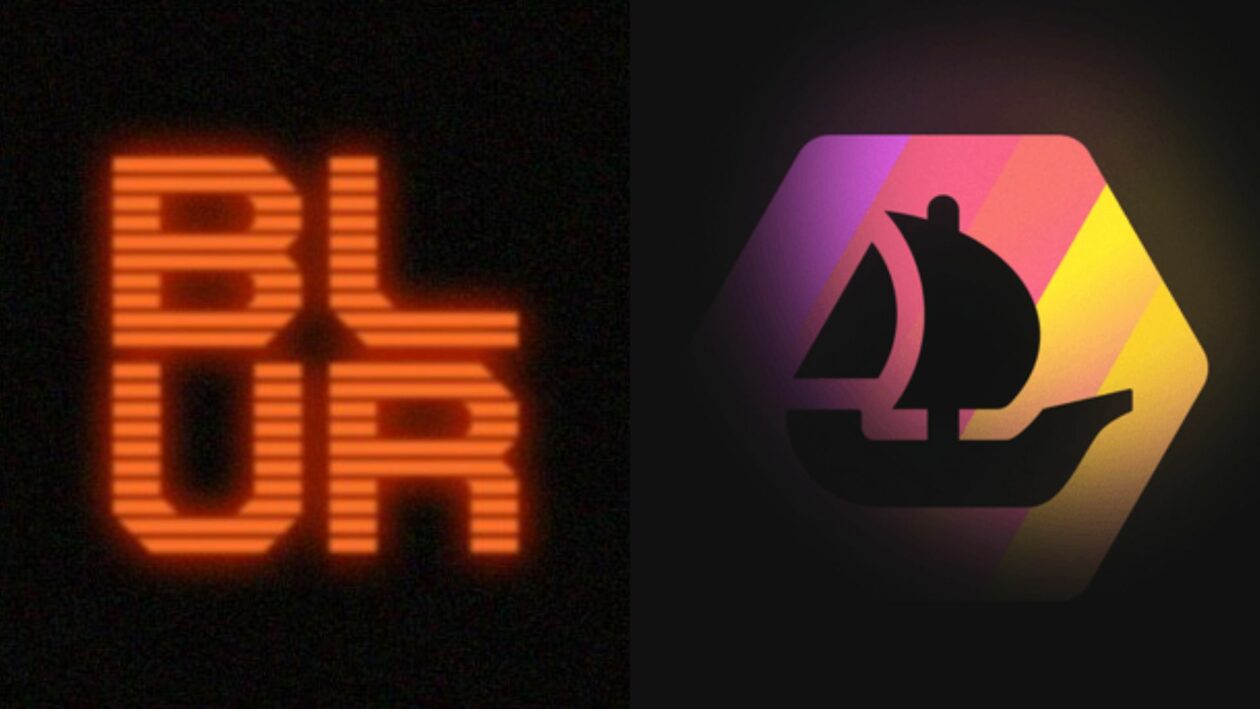Several non-fungible token (NFT) creators and artists are seeking alternative platforms to sell their work after OpenSea stopped mandating creator royalties at its marketplace.
OpenSea, one of the world’s largest NFT marketplaces, announced on Aug. 17 that creator royalty fees would be optional on its platform. The change took effect on Aug. 31.
NFTs represent some of the most promising profit opportunities for digital artists. With NFT royalties, creators can earn a percentage of the sale each time an NFT is sold and subsequently resold. Many creators, including pseudonymous generative artist Zancan, hope NFTs will empower independent artists with an additional source of revenue.
OpenSea’s decision comes during a difficult time for the entire NFT market that saw significant declines. The Forkast 500 NFT Index hit a new all-time low of 1,999.14 points on Sept. 19.
“Removing royalties is shooting a bullet in one’s foot,” Zancan, the creator behind Garden, Monoliths NFT collection, told Forkast.
“I’m a supporter of artists’ royalties. This is the best thing that’s ever happened to artists and the art world at large. This is a major point in the reason why anyone would adopt blockchain technology to distribute their art or collect the art.”
Zancan’s Garden, Monoliths is a Tezos-based NFT collection that generated over 1.2 million worth of Tezos (US$788,040) in secondary sales. With a 15% royalty fee, the collection generated over US$118,000 of royalties for the creator.
OpenSea’s decision will mainly impact NFT creators and artists, who depend on the platform’s creator royalties for their livelihood.
“The decision by OpenSea to cut royalties can indeed impact an artist’s secondary income. However, it’s important to note that OpenSea royalties have traditionally been optional for creators, allowing them to set their desired percentage,” said Tommy Chandra, an Indonesia-based illustrator and graphic designer.
“Exploring different secondary marketplaces like LooksRare, Blur and Rarible can indeed be a viable alternative strategy. Diversifying your presence across various platforms ensures that you’re not overly dependent on a single marketplace and can help you maintain control over your earnings.”
Creator royalties on OpenSea fell to US$83,970 on Thursday, down 76% in the past two months from a three-month high of US$354,008 on June 28, according to Dune data. Royalty fees fell 12.9% from US$96,430 on Aug. 31, when OpenSea’s decision took effect.
Simultaneously, creator royalties on Blur, a marketplace that has generated over US$6.27 billion in all-time sales volume, fell to US$31,229 on Thursday, down 96% from a three-month high of US$830,661 recorded on June 27. Royalty fees on the platform fell 36.4% since OpenSea’s decision took effect, from US$49,175 generated on Aug. 31.
Since OpenSea’s decision took effect, NFT production on Ethereum, which measures the primary sales generated from NFT minting, rose 21% to US$652,140 on Sept. 21, from US$536,930 on Aug. 31, suggesting that NFT creator activity is starting to recover, Simultaneously, NFT production on Polygon fell 11% to US$168,070 on Sept. 21, while NFT production on Solana fell 67% to US$14,310.
As for NFT marketplaces, NFT services on Ethereum, which measures the NFT marketplaces fees and creator royalties generated from secondary NFT sales, fell to US$103,680 on Wednesday, down 67% from US$320,600 on Aug. 31. During the same time, NFT services on Polygon fell 75% to US$4,930, while NFT services on Solana rose 8.5% to US$12,750.
Creator royalties are essential for independent artists to continue their work, which is something that NFT platforms should understand, according to David Tng, managing director at TZ APAC, the Asian adoption entity of the Tezos blockchain.
Tezos is a creator-focused blockchain and one of the most popular choices for artists, where NFT creators generated over US$126 million in all-time sales volume, according to CryptoSlam data. There are currently over 4.6 million wallets on the network, up 0.44% in the past 30 days, according to Tzstats.
“The potential outcome of these modifications could result in a shift in artist preference towards platforms that continue to uphold the concept of royalties for their offerings. Artists might opt to limit the trading of their NFTs to exclusive platforms, thereby reinforcing the importance of the royalty system in supporting their creative pursuits,” wrote Tng in a statement shared with Forkast.
Royalty-paying transactions on OpenSea fell to 5,408 transactions on Wednesday, down 76% from its three-month high of 22,548 transactions on June 14. During the same period, Blur’s royalty-paying transactions also fell 77% to 2,612 on Wednesday, down from its three-month high of 11,523 transactions on June 27.
Since OpenSea’s decision took effect, royalty-paying transactions on the marketplace fell to 5,408 on Wednesday, down 23% from 7,058 on Aug. 31. Simultaneously, royalty-paying transactions on Blur fell to 2,612 on Sept. 19, down 1.8% from 2,661 transactions on Aug. 31.
“Tezos marketplace and other blockchain platforms may offer different features and policies, such as robust support for royalties in the secondary market, which can be advantageous for artists seeking more dependable revenue streams,” wrote Chandra.
“I don’t think I need to leave OpenSea. It’s better to add more marketplaces and blockchain options.”
See related article: DeFi revenue remains resilient despite Curve Finance hack

